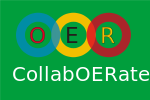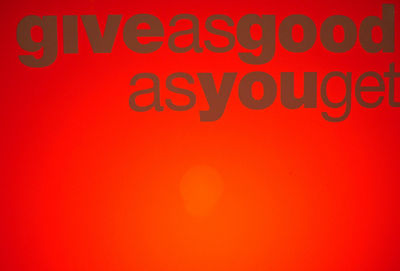OERU Planning meeting: Information pack
Download pdf version of pre-meeting information pack![]() - 706KB
- 706KB
The purpose of this inaugural meeting is to collaboratively:
|
Contents
Details
- Date and time: Wednesday, 23 February 2011, 9am to 5pm NZDST (See world time for meeting start)
- Meeting participants: (Check that your name appears on the list of participants. If not register here.)
- Webstream url: The live web stream will be posted on the relevant web-pages and via the email lists the day before the meeting.
- Physical venue: Council Room, 3rd Floor, Block F, Otago Polytechnic, Forth Street Dunedin, New Zealand. (Apology, Only confirmed participants may attend. All seats have been taken.)
- Tag: #oeru. Use this tag for blog and microblog posts (identi.ca preferred) about the OER university.
Bookmark these links
Pre-meeting preparation
|
OERu concept

The OER university concept is based on the strategic enablers where it is more effective to collaborate on selected components of the OER university concept, for example shared course design and development. However, collaborating institutions retain their core operational services associated with assessment and credentialisation. This OER ecosystem aims to serve both formal and informal learners by creating more flexible pathways for diverse student needs.
Logic model for the OERu
The problem
Individuals are free to learn from OER hosted on the open web. The problem is that learners who access digital OERs on the web and acquire knowledge and skills either formally or informally, alone or in groups, cannot readily have their learning assessed and subsequently receive appropriate academic recognition for their efforts.
The solution
The core mission of any modern university is to contribute to society as a community of scholars through the pursuit of education, learning and research. Many post-secondary institutions also incorporate the mission of community service, as publicly funded institutions, to serve the wider interests of the communities in which they operate by sharing expertise and scholarship for the benefit of society. By combining OER with the community service mission, it is possible to create what Taylor[2] has called a “parallel universe” of higher education delivery to complement and augment existing provision, especially for those who lack the means to follow traditional learning paths. Moreover, the OER university concept is a means whereby education at all levels can be more accessible, more affordable and more efficient by reinvesting savings of shared course development back into the formal teaching operations.
Defining open education resources (OER)
The concept of open education encapsulates a simple but powerful idea that the world’s knowledge is a public good and that the open web provides an extraordinary opportunity for everyone to share, use, and reuse knowledge.
| Open Education Resources (OER) are teaching, learning, and research resources that reside in the public domain or have been released under an intellectual property license that permits their free use or re-purposing by others. Open educational resources include full courses, course materials, modules, textbooks, streaming videos, tests, software, and any other tools, materials, or techniques used to support access to knowledge.[3] |
Reflecting on the requirements for a definition of OER
There is a diverse range of opinion on the specific requirements of what constitutes an open education resource. In writing about the definition of OER, David Wiley indicates that the word "open" can have different meanings in different contexts and in practice it is a continuous (not binary) construct. "A door can be wide open, mostly open, cracked slightly open, or completely closed. So can your eyes, so can a window, etc."[4]A precise definition of OER impinges on the range of opinions regarding fundamental questions associated with interpretations of the meaning of the freedom to learn, for example:
- Should a definition of OER include the requirement of an open content license, for example a Creative Commons license or the GNU Free Documentation License?
- Is no-cost access to a learning resource on the Internet sufficient to qualify for a definition of OER?
- Must a definition of OER incorporate the rights to adapt and modify a resource without restriction for different learning contexts?
- Does the concept of freedom include the right to earn a living from OER?
- Are restrictions on reuse permissible for a definition of OER?
- Is there a requirement for technical related provisions, for example that an OER must be distributed in editable file formats?
Towards a definition of OER for a sustainable open education ecosystem
Our collective understanding of the definition of OER is maturing in parallel with increased adoption of open education in our formal education institutions around the world. In nurturing the development of a sustainable open education ecosystem, there is growing consensus that a definition of OER ideally needs to incorporate three interrelated dimensions:- Educational values: OER should be free;
- Pedagogical utility: OER should embed the permissions of the 4Rs (reuse, revise, remix and redistribute); and
- Technology enablers: Technology and media choices should not restrict the permissions of the 4R framework.
Each component is summarised below.
Educational values: OER should be free
When thinking about the free in OER, many people associate this with learning content which is accessible at no-cost to the user. However, free also refers to personal liberty -- the freedom or permission to act without restriction. Consequently, there are two dimensions which need to be considered under the meaning of free in OER: no-cost (gratis) and the freedoms of the users (liberty).
- OER must be accessible at no-cost to the user (gratis)
- To qualify as OER, there must always be a version of the materials freely accessible at no-cost to the user. This does not necessarily imply that distributors of OER content may not charge for packaging, distribution or value-added services, but it does require that a version of the OER is always available at no-cost. Consider for example the OER Handbook hosted on WikiEducator. Educators are free to use, adapt or modify a copy of the OER Handbook at no cost. Moreover, users are free to copy the OER Handbook and host this on any website of their choosing or print the book themselves. Some users may choose to purchase a bound version of the OER Handbook from Lulu.com or download a version at no-cost on the Lulu.com website.
- OER should respect the freedoms of the users (liberty)
- The freedoms of OER users are derived from the essential freedoms of the free software movement. They are encapsulated in the 4R framework (reuse, revise, remix, redistribute) and decisions about technology and media choices below.
- For instance, restricting the right to earn a living from OER can be considered a material restriction of the essential freedoms and rights to redistribute OER. Consequently the OER Foundation does not advocate the use of the non-commercial restriction as in the case of some OER projects. The discussion on user freedoms in the context of OER is a complex debate and falls outside the ambit of this unit. However, you can read more about these issues in the suggested readings below.
Pedagogical utility: The 4R framework
With OER you are free to:
| ||||||
Content is open to the extent that its permissions enable users to engage in the 4R activities. Content is less open to the extent that its permissions restrict users access (e.g., forbidding derivative works or prohibiting commercial use) to the 4R activities.
Technology and media choices
Digital technologies are the enablers for the 4Rs above. However, technology and media choices can also restrict the 4R activities. There are two important considerations pertaining to technology and media choices for OER:
- Access to the tools required for editing, and
- Ensuring that OER is meaningfully editable.
In both instances, the minimum requirement is to adopt open standards for storing OER. An open standard refers to file formats which are publicly available with unencumbered rights to use the standards or specification concerned. For example, the open web is built upon the specifications of the World Wide Web Consortium which ensures that all browsers can implement the protocols on a royalty free basis. In this way, both free software and closed software browsers can access and interpret the digital information on the world wide web.
Similarly OER should be stored and distributed using open standards and formats which are easily editable. In this way we can ensure that:
- All users will have unrestricted access to the tools required to revise and remix OER content. All users should be free to use the software of their choice, and should not be required to sacrifice their freedoms or be forced to purchase software licenses in order to participate freely in the 4Rs. Therefore, digital content which necessitates the user to acquire a software license in order to modify or adapt the source materials imposes restrictions in the 4R activities. So for example, video files should avoid using closed file formats like Windows Media Video (WMV) or Flash Video Format (FLV) which may force some users to sacrifice their freedoms by requiring the installation of patented or encumbered codecs for editing these files. Educators and OER developers should be encouraged to respect the freedoms of future users by providing open file formats of their creative works.
- All users have the capacity to edit an OER to suit their local needs. For example, while the Portable Document Format (PDF) is an open standard for document exchange it is not easy to edit other than minor changes. OER offered in this format only cannot be revised easily for suitable local use.
Further reading (optional)
References
- ↑ Taylor, J.C. 2007. Open courseware futures: Creating a parallel universe. e-Journal of Instructional Science and Technology (e-JIST), Vol 10, No. 1. Online: http://www.ascilite.org.au/ajet/e-jist/docs/vol10_no1/papers/full_papers/taylorj.htm. Retrieved 16 January 2011.
- ↑ Taylor, J. 2007. Open courseware futures: Creating a parallel universe. e-Journal of Instructional Science and Technology (e-JIST), Vol 10, No. 1. Online: http://www.ascilite.org.au/ajet/e-jist/docs/vol10_no1/papers/full_papers/taylorj.htm. Retrieved 16 January 2011.
- ↑ Atkins, D.E., Brown, J.S. & Hammond, A.L. (February 2007). A Review of the Open Educational Resources (OER) Movement: Achievements, Challenges, and New Opportunities. Report to The William and Flora Hewlett Foundation. p. 4.
- ↑ 4.0 4.1 Wiley, D. (No Date). Defining the "Open" in Open Content. Retrieved 27 December 2010.



